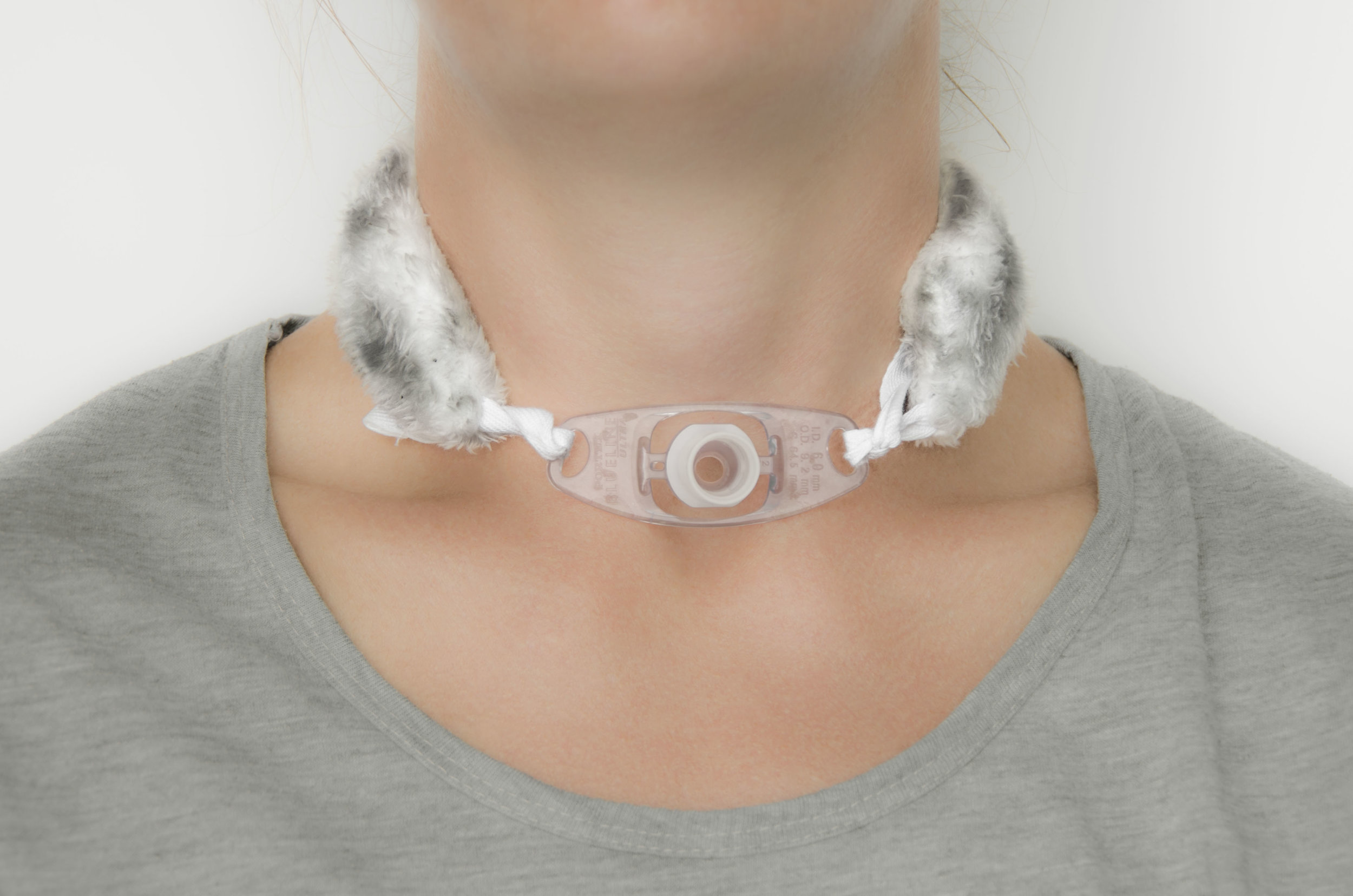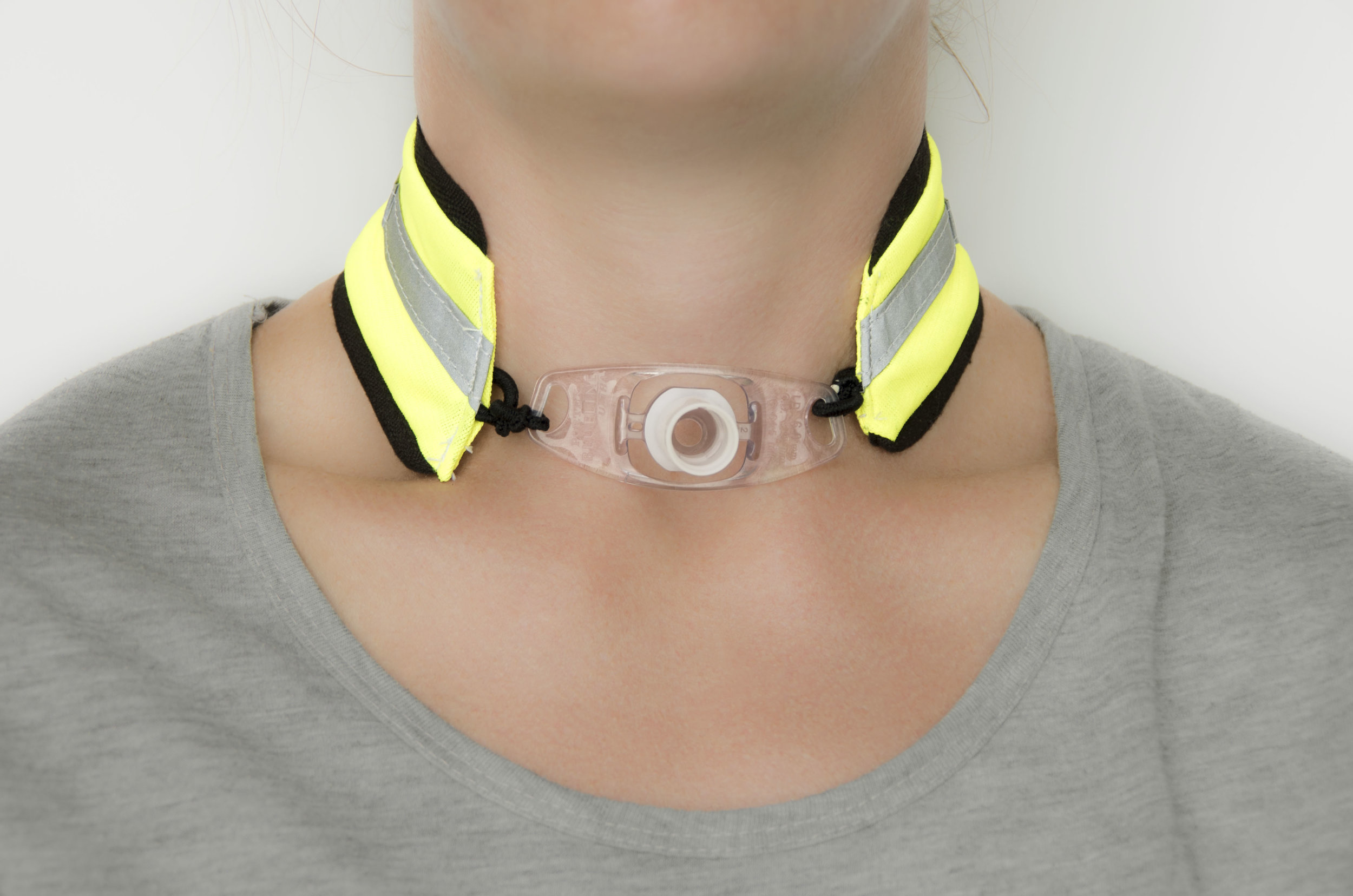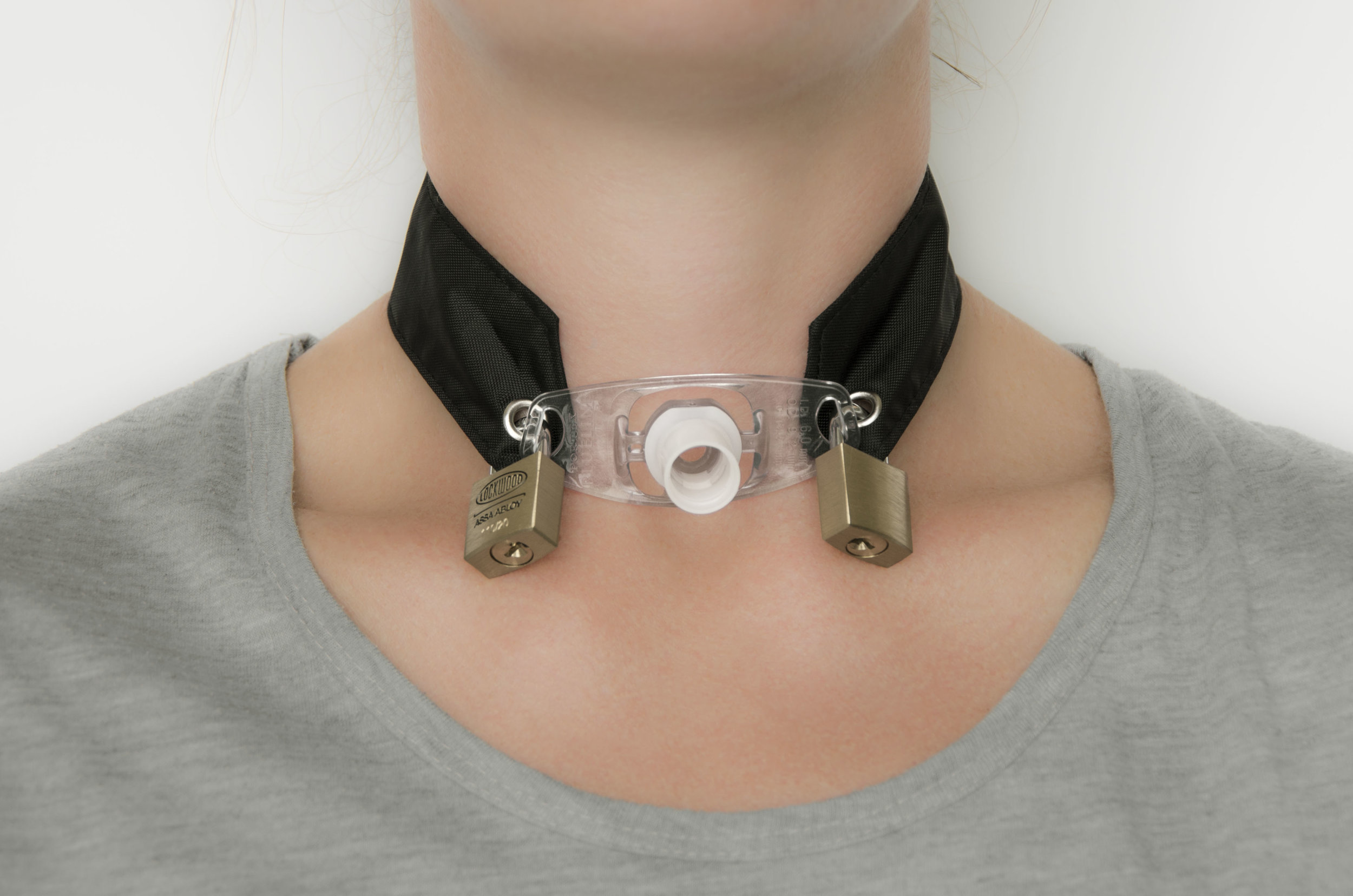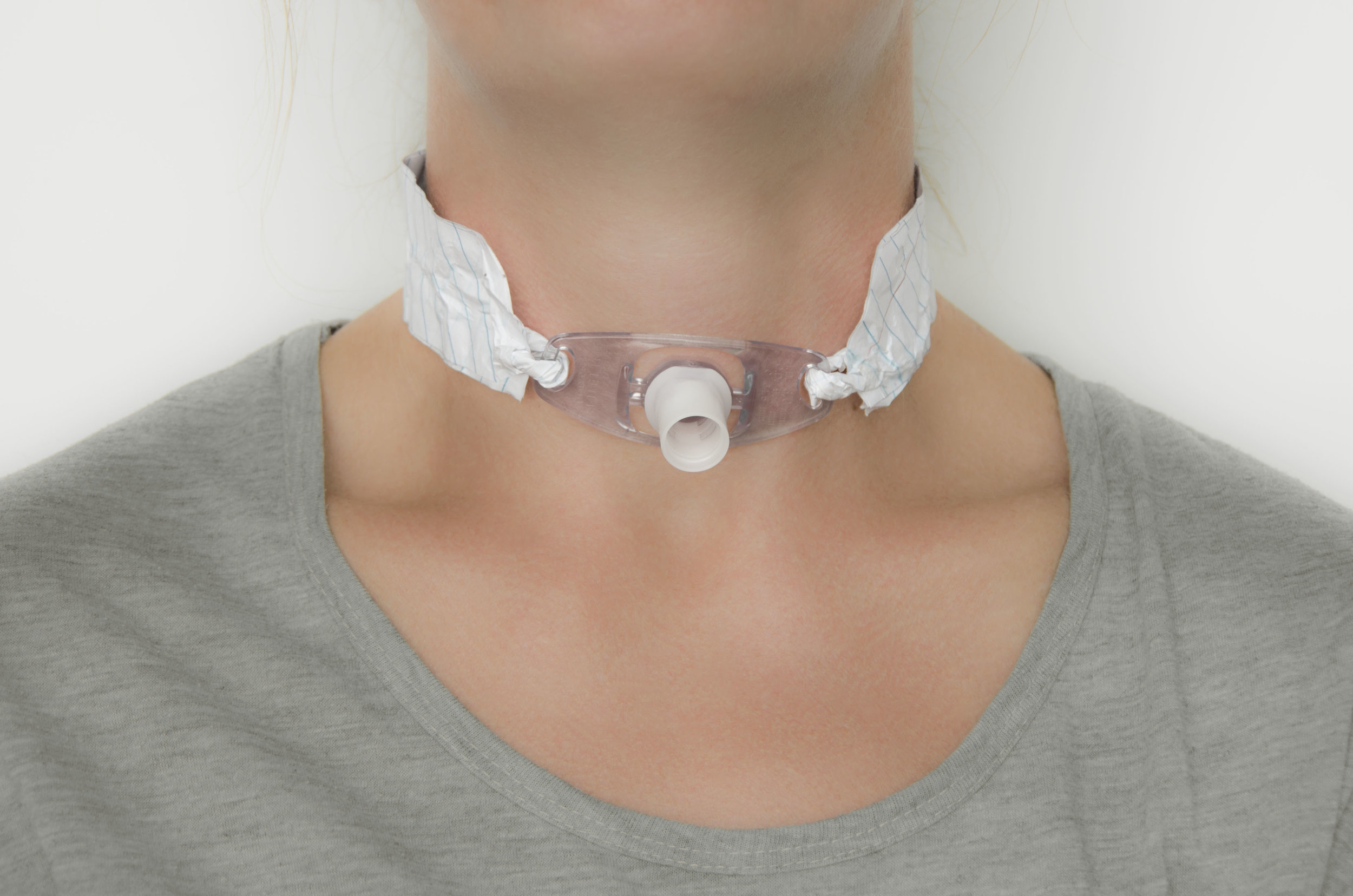
Tracheostomy product designs have barely changed in 100 years. Because tracheostomy users cannot breathe without their tracheostomy tubes, existing tracheostomy products focus on cost effective clinical functionality, often at the expense of user experience.
This means tracheostomy products are designed for the disability rather than the user.
Users face physical and emotional distress because of their tracheostomies. Long-term tracheostomy users continue to live with a reminder of patient identity embedded in their body months, years, and even decades after leaving hospital. Ongoing maintenance, shame and stigma impact users’ quality of life, yet there is little research into their experiences and relationships with tracheostomy products. This research aimed to capture tracheostomy users’ stories, advocate for greater consideration of their needs, and challenge historic stagnation in tracheostomy design.
Following on from in-depth interviews with long-term users of tracheostomies, we held co-design workshops, consisting of two creative activities facilitated by designers and executed in collaboration with people with tracheostomies. Participants had used their tracheostomies for between one and twenty-five years and ranged in age from twenty-five to seventy-five. The first activity was a group brainstorm focused on improving tracheostomy products. The second activity asked participants to evaluate and select prototyped tracheostomy components to create their own designs. Patterns of meaning were extracted from workshop findings using thematic analysis.
To capture findings and convey participants’ experiences, a series of critical design artefacts were produced illustrating problems they identified with existing products. These artefacts used familiar colours, textures, and materials to guide observers’ interpretations. The goal was to make aspects of tracheostomy users’ experiences immediately comprehensible to observers, regardless of their tracheostomy knowledge. These explorations led to a new cost-effective, user-centred design solution that was also validated by clinicians.







